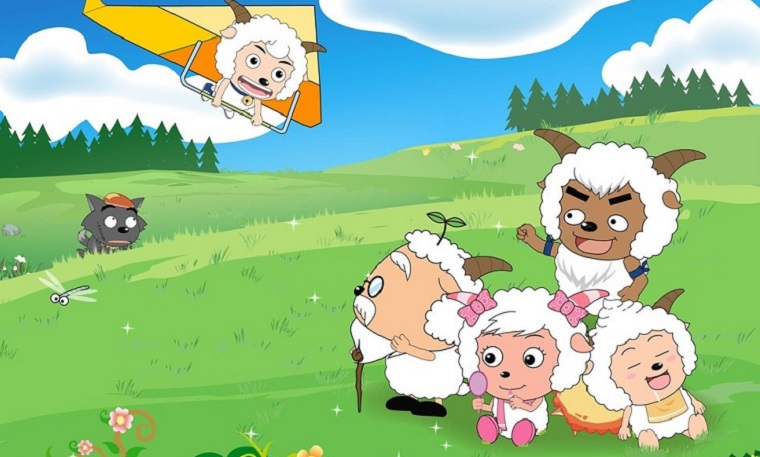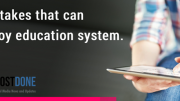Make Your Class Interesting with Funny Cartoons
Nowadays, teachers are facing a challenging task. With everything changing so fast, students have paid particular attention to joyful atmosphere in the classroom, which demanding new teaching techniques from teachers to fulfill their needs for learning with interest. Then, what’s more engaging than animation? Now let’s see how it can help in the classroom.
What is Animation?
An animation is a series of simple drawings of things in our daily life, which is turned into a moving visual representation with lots of lively colors and humor. A case in point is Pleasant Goat and Big Big Wolf, a hugely popular Chinese cartoon which has been running for twelve years. It is a story about a group of lovely goats living in the Green-Green Pastures and a big wolf who tries to capture and eat them. Interestingly, Pleasant Goat always manages to outwit the poor wolf’s flawed conspiracies.
Previously, animations were mainly meant for kids, but now adults enjoy them at their will; they were meant for entertainment only, but now they are widely used for educational purpose as well.
Importance of Animation in Education
Teaching is not that easy as you expect. It takes a lot of efforts to transfer the information from your own mind to someone else’s. Therefore, teachers are required to resort to manifold approaches to make this task easier. It has been a while since animation became an extensively-used teaching aid. While there are many who love it, there are some others who doubt its significance. To them, animations are nothing short of time-wasting things as it takes a long time for students to recognize the educational values.
However, it is true that there are so many good reasons to capitalize on different animation resources in the classroom. Both teachers and students can reap considerable benefits in an improved teaching environment.
Animations hook students: It is children’s nature to seek fun in everything around them. Every joyful moment will leave them excited and make them stay focused. Conversely, children will lose concentration in a dull classroom. The same goes for teenagers and adults. So, to grasp a student’s attention toward a subject, the use of animations will be a hook to reel them in. Cartoons feature vibrant colors, lovable characters, intriguing plots and catchy songs, which can easily capture students’ eyes and arouse their interest.
Animations interpret concepts better: Many intangible topics cannot be understood theoretically; they need to be elaborated clearly thanks to animation. For example, science is one of the most challenging subjects because most theories cannot happen without a specific environment. Then animated videos can significantly help to explain the topic in a simpler way.
Animations improve teacher-student relationship: Animations are welcomed by most children. If the teacher uses a cartoon video in teaching, the student will consider the teacher as amiable and start to like him or her. It is a magical power, something that bridges the gap between teachers and students. Once the linking is developed, students will show more attentive in class.
How to use animation
Admittedly, too often animation leaves students and teachers baffled if it’s not used in the right way. So exactly how can animation be used in education? Here are some suggestions.
Second Language Acquisition: Watching animations in Mandarin Chinese is beneficial for children who are learning the language as a second language, especially if they are learning the target language in a non-Chinese environment. Take for example Pleasant Goat and Big Big Wolf, a Chinese popular animation featuring catchy theme songs and makes viewers want to sing along. It is conducive to Mandarin learning as it provides young beginners with native language inputs.
Moral Education: It is quite a strenuous task to teach moral values and good manners for most teachers. It is often the case that students take things lightly because they don’t know what consequences will be brought about by their misconducts, or what positive impacts will be made by their good deeds. But if the teacher shows an animation video, Pleasant Goat and Big Big Wolf for example, students will realize friends should help each other and learn to differentiate between good and evil.

Presentation Skills: An animation is made of several characters and a series of plots. A teacher can assign each of the characters to the students and tell them to perform the play. Besides, by playing a video clip from an animation, the teacher can set some questions to spark their thinking and invite them to voice their opinions. Both ways give students a chance to speak and perform in the front of the whole class, thus motivating them to put more efforts in their presentation skills.
So, if you are still wondering about how you can make a classroom interesting in different ways, why not try to use funny cartoons? Get the best out of your teaching efforts and achieve the best output from your students.
As a student, you may want to test your intellectual prowess with the IQ Test for All.






Be the first to comment on "How Animation Can Enhance Student Learning"